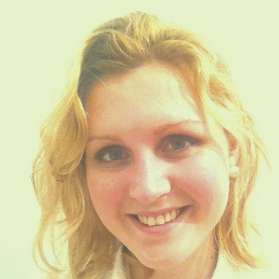The name of experimental opera and theatre company Opera in Space refers to its aim of interacting with the spaces in which it performs (no, nothing to do with astronauts or sci-fi interpretations). The Bussey Building was the chosen space for its most recent operatic subject. Tucked away off Rye Lane in Peckham, it’s a gritty, eerie and somewhat bleak place – a world away from the major opera houses. Moving across three floors, with the audience often sat on the floor around the action, this building was the unorthodox setting for an appropriately unusual Dido and Aeneas.
Purcell’s Dido and Aeneas was first performed in 1689. It is a moral tale of a woman wronged by a man, and one of the first English operas. The key structure leads our emotions to feel joy and tragedy – and it includes light entertainment in the form of some bawdy sailors. All this said, Director Richard Pyros’ first foray into opera didn’t seek to live up to any precedent, or to perform Purcell's opera as such, but to tell ‘simply the story of a man and a woman falling in love and being torn apart...in our own way’. This declaration of artistic freedom was made problematic by the inclusion of chunky and stylistically faithful excerpts from Purcell’s score. Singers and instrumentalists gave heartfelt, reverent renditions, which in fact proved to be the high points of the evening. The inclusion of dancing was another (traditional) high point, despite involving some reluctant audience members. However much the director claims his Dido and Aeneas is not Purcell’s, his production did not completely distance itself from the original – while at the same time using enough alien musical material for the Purcell to be confused and displaced. Overall the mix was refreshing.
The structure of Dido and Aeneas was changed in places, although there were still three acts. The production opened with a series of brightly-lit friezes on stage, telling the classical story of Dido and Aeneas’ ill-fated love affair. This was silent but for bursts of drumming music from stage-side speakers. Then, the musicians entered, Act I began and soon we were already onto Dido’s lament “When I am laid in earth&rdqu;o from Purcell’s Act III. I can see no reason for placing this so early on; its tragic impact was diminished by the audience not yet having chance to develop sympathy for Dido. Other notable changes were the loud playing of distorted synthesised sound over speakers between acts - creating a sense of danger and intensity but again maybe unnecessary – and, more effectively, having Dido sing jazzy love songs, for example when her parting from Aeneas had been finalised. This got a laugh from the audience, which was probably not the intention, but either way it was an interesting addition and Sylvie Gallant adjusted to it well. A successful effect of the twentieth-century songs’ inclusion was to emphasise the universality of Dido and Aeneas’ tragic story, nodding to its relevance in our era.
Purcell’s score was played by the rather minimal ensemble of Eleanor Harris on violin, Poppy Walshaw on cello and Katie De La Matter on a small harpsichord. They blended wonderfully and held together the singers while not overpowering them. Criticisms which must be levied were that diction was generally on the unclear side (Aeneas excepted) and the intricate vocal runs and rhythms, even in numbers such as ‘Shake the cloud from off your brow’ lacked bite. Gallant’s Dido had some intonation isuses in Act I and did not display much passion until her death at the end, but her voice was pleasant enough in both operatic and jazz song modes. This said, the standard of singing was generally good considering the amount of movement required of the performers, especially from an energetic Carleen Ebbs as Belinda. Her voice is somewhere between mezzo and soprano, but displayed a consistent mellowness and clarity of tone that was a pleasure to listen to. Jean-Sebastien Beauvais was a menacing presence as various spirits and deserves mention for his vocal flexibility across both Bass and Countertenor ranges.
A defining characteristic of this production was moving between floors of the building after each act. The main element to be enhanced by this was the setting – each room was significantly different, no clunky set changes were needed and the audience saw the action from a different angle each tim (visibility was variable). This allowed the performance to progress pretty seamlessly. The weirdest state setting was in Act II, Scene I: the “Cave of the Sorceress”. This was a strange, hellish sort of laboratory room behind a plastic screen in which hideously veiled, apparently cannibalistic witches writhed and plotted, reminding me of creatures from Hieronymous Bosch. Again the diction was lost, but the music was still evocative and in tune.
There’s a casual intimacy to the low-lit venue of the Bussey Building, which immerses you in the action. The musicians responded well to these surroundings and their singing was not over-loud, as it can seem in some other “chamber” opera venues. Although both the plot and musical direction became rather confused in places, this was an entertaining interpretation of a classic opera by a small but dextrous cast. It was not as rebellious as the Director may have hoped but still managed to surprise in places.


